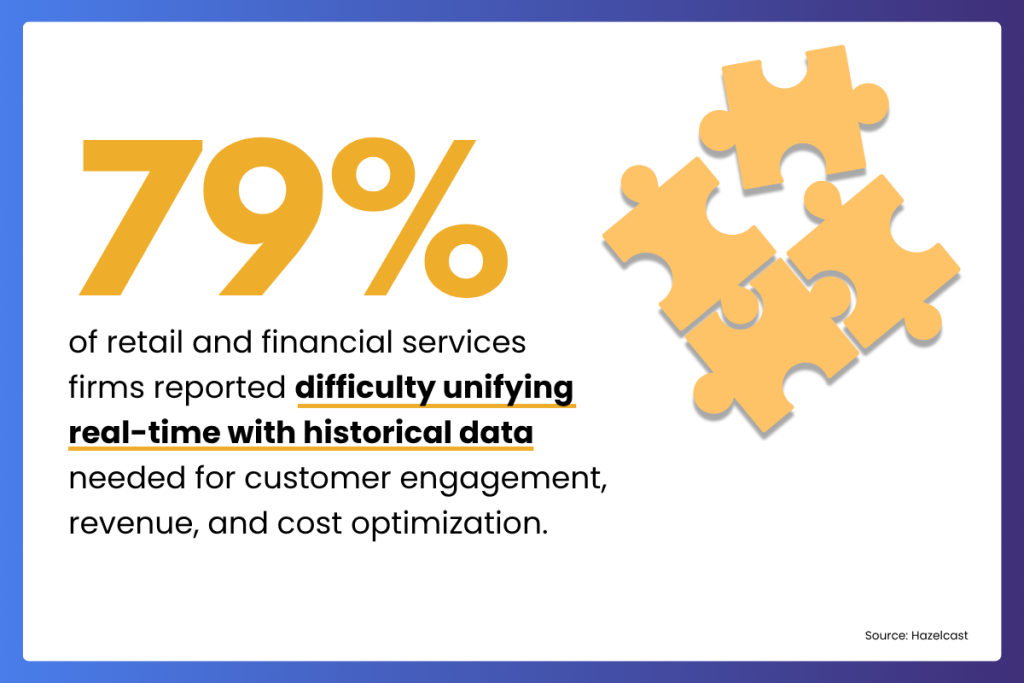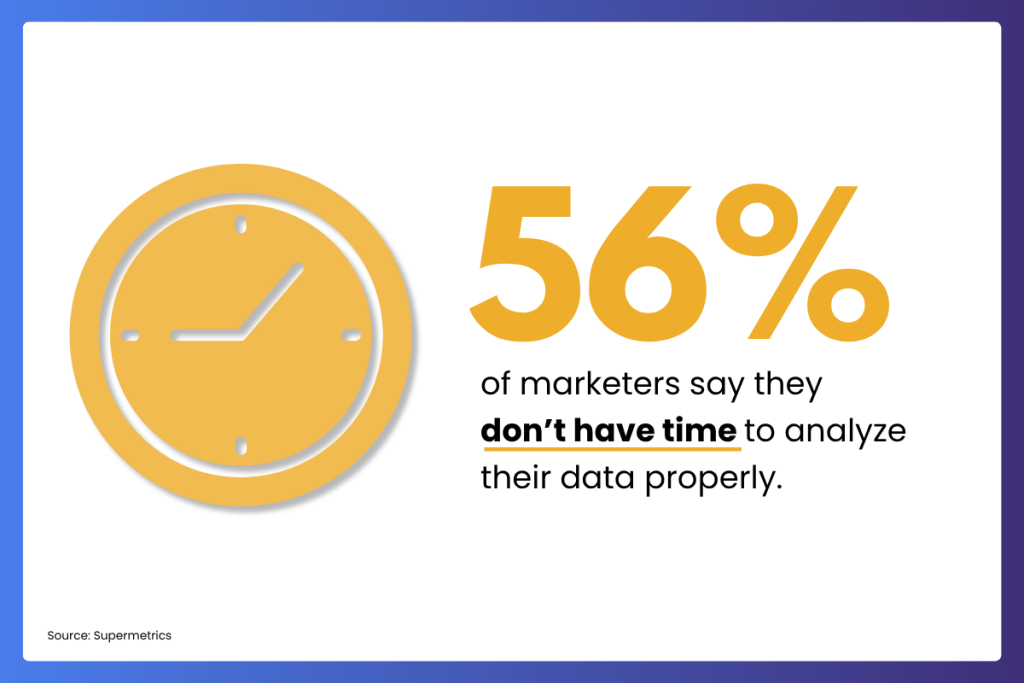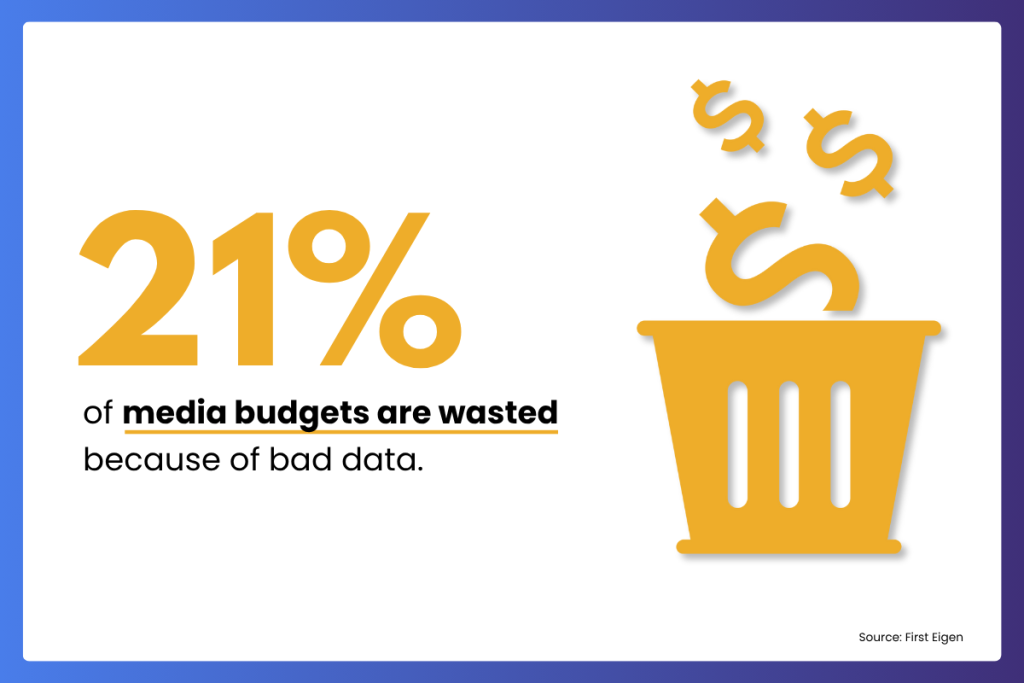Every great marketer has had to wrestle with a data quality monster every now and then. Perhaps you’re currently trying to tame one.
Poor data quality eats your marketing dollars, limiting your ROI potential.
And if you don’t have the right processes in place to keep it clean, you’re taking unnecessary risks—like wasting budget, upsetting customers, and embarrassing your brand.
So, why does data need so much TLC? Because just like people, data is dynamic.
People make typos on forms, move, change jobs, start families, get new phone numbers, take up new hobbies, and the list goes on.
According to Cognism, a whopping 70.3% of data becomes outdated every year.
If you’re not being proactive, you’ll be left with stagnant insights and frustrated by stale campaigns.
The hero you can count on? Data hygiene.
What is Data Hygiene?
Data hygiene is the ongoing process of maintaining your data quality by identifying, fixing, and preventing any errors or outdated info. This arms your marketing with reliable and actionable insights.
30 Actionable Data Hygiene Statistics for 2025
We’ve compiled 30 of the latest data hygiene statistics about the importance of data hygiene for your marketing and business goals.
General Data Hygiene Statistics
- 62% of marketers are only moderately confident (or worse) in their data, analytics, and insights systems. (CMO Council)
- B2B data decays at about 2.1% per month, or roughly 20–30% per year. (Leadspace)
- 46% of marketers say access to relevant customer data is hit or miss or worse. (CMO Council)
- Bad data costs the U.S. economy over $3 trillion per year. (Harvard Business Review)
- 75% of businesses believe poor data quality undermines their customer experience efforts. (PR Newswire)
- In Enterprise data, a conservative estimate is that approximately 10% consists of duplicate records. (Edgewater)
- B2B contact data decays at a rate of 22.5% to 30% per year, with some industries experiencing decay rates as high as 70%. (SuperAGI)
- 83% of B2B companies report having poor product or customer data. (CDP Institute)
- 48% of organizations use data science, AI, or machine learning tools to improve data quality. (O’Reilly, 2024)
- 79% of retail and financial services firms reported difficulty unifying real-time with historical data needed for customer engagement, revenue, and cost optimization. (Hazelcast)

Sales and Marketing Data Hygiene Statistics
- 50% of sales time is wasted on unproductive prospecting. (Dun and Bradstreet)
- High-quality B2B contact data is expected to grow by 15% in 2025. (SuperAGI)
- 56% of marketers say they don’t have enough time to analyze their data properly. (Supermetrics)
- Companies estimate that 10-25% of their marketing budget is wasted due to poor data quality. (The Data Business)
- 37% of organizations do not have a formal data quality management program in place. (WifiTalents)
- 26% of marketers say they don’t have enough data to make decisions. (Supermetrics)
- 64% of B2B marketing leaders do not trust their marketing measurement data for decision-making. (Forrester)
- Emails with personalized subject lines are now seeing up to 35% higher open rates in 2025. (SQ Magazine)
- 13% of U.S. consumers unsubscribe from marketing emails because the content doesn’t match their interests or past purchases. (Digital Information World)
- Sales and marketing departments waste up to 32% of their time dealing with data quality issues instead of focusing on growth. (TDAN)
- Bad data causes B2B marketers to target the wrong decision-makers almost 86% of the time. (First Eigen)
- 29% of email senders perform list cleaning tasks; 16% clean their lists once or twice per year, while 11.2% never clean their lists. (Blogging Wizard)

Data Hygiene Challenges Statistics
- 52% say data quality is among the most essential attributes of a successful multichannel marketing strategy. (Ascend2)
- 27% of marketers are concerned about data quantity. (Ascend2)
- Unclean data is estimated to stand at 20% of an organization’s revenue. (The Software Bureau)
- Data decays at a rate of 30% per year. (Data 8)
- 59% of organizations do not measure data quality. (Atlan)
- Poor data quality costs organizations an average of $12.9 million per year. (Gartner)
- Advertisers waste 21% of their media budgets because of bad data. (First Eigen)
- 85% of customers are less likely to do business with a company that has made a mistake with their contact information. (SuperAGI)

Related Reading: 10 Data Hygiene Best Practices to Keep Your Data Clean
The Bottom Line
As these statistics reveal, data hygiene is critical to ensuring the effectiveness of your marketing. Without it, you’re driving blind and leaving valuable leads on the table.
As Kym Vance, Head of Business Development at PGM, puts it, “Data quality impacts every part of your business. When you take data hygiene seriously, you’re better equipped to keep loyal customers happy, impress your prospects, understand your marketing impact, and seize opportunities that align with your goals.”
Data Hygiene Solutions
Faced with customer info scattered across multiple channels? Missing important contact insights?
Our team does the heavy lifting for you. Here’s a brief overview of data hygiene solutions that help you achieve more actionable insights:
Data Validation: Flag errors, inconsistencies, and make sure everything follows the rules. For example, verifying email addresses, checking phone number formats, and alerting you of important info that’s missing.
Data Deduplication (Dedupe): Find and merge any duplicate records so you don’t end up with an inflated database—handy if you want to avoid annoyed customers and the embarrassment of sending the same message twice.
Data Standardization: Ensure your data follows consistent formats (like always using “United States” instead of sometimes “USA”)—important for making sure your insights are cohesive so you have a unified view of your customers and campaigns.
Data Enrichment: Once your data is tidy, add layers of insights to fill in the gaps. For example, data enrichment helps you add missing demographic, lifestyle, and behavioral insights on your customers that can strengthen your targeting.

